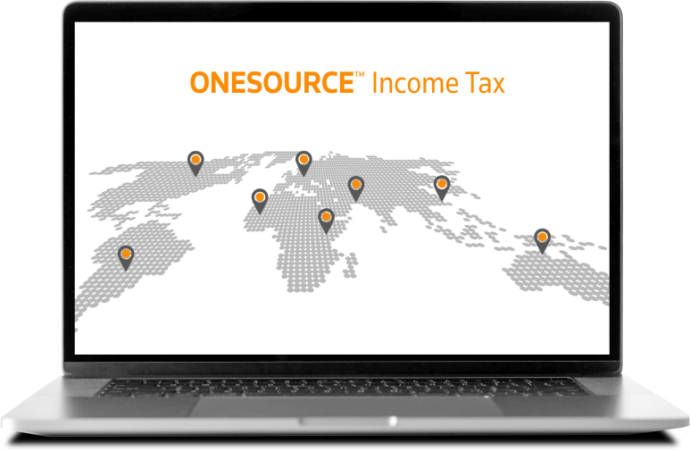Section 174 Capitalization of the Tax Cuts and Jobs Act (TCJA) has created confusion for many corporate tax specialists to work through in the coming months. Pending legislation is complicating matters even further.
__________________________________________________________________________________________

Panelists from the Thomson Reuters webinar, Section 174: What We Now Know, discussed these challenges, and provided key insights to help tax professionals navigate this murky landscape.
_________________________________________________________________________________________
Here are three important takeaways from their conversation:
#1 – Big changes to research expenses
- The treatment of Section 174 research expenses following the Tax Cuts and Jobs Act (TCJA) is a source of great uncertainty for businesses. TCJA changed how research and development expenses are treated for tax purposes, requiring taxpayers to capitalize and amortize those expenses over different periods.
- As a reminder, Section 174 defines both indirect and direct research expenses. It is important to note that not all of these expenses qualify for the R&D Tax Credit. Expenses that qualify for the credit are those undertaken to discover information which is technological in nature and the application of which is intended to be useful in the development of a new or improved business component of the taxpayer.
- “Before TCJA, pretty much research and development expenses were 100% deductible in the current year,” said Sharon Rosiak, Director, Thomson Reuters, during the webinar. “There were some options to elect domestic research and amortize it over 60 months and some other nuances. But TCJA changed all of that and required taxpayers to capitalize and amortize those research expenses over different periods of time; five years for domestic, and 15 years for overseas research. And just the nature of that and that capitalization also had impacts on other operating code sections that applied to different tax attributes.”
- However, the passage of H.R. 7024, the Tax Relief in American Families and Workers Act of 2024, in the House of Representatives has added more confusion. If this bill becomes law, it could return the full deduction for domestic research expenses. It may also keep the capitalization and amortization rules for overseas research.
- While the bill has received bipartisan support, passage in the Senate is likely to be delayed because it is not the most pressing matter on Congress’ radar, Paul DiSangro, Partner, Mayer Brown, noted during the webinar. DiSangro pointed to foreign aid, immigration, and government funding as bigger areas of focus for lawmakers at the moment. He believes the earliest this bill may pass in the Senate is late March.
- This leaves companies without a clear timeline of what may happen and when. Still, firms need to consider how the potential changes in tax laws could impact their tax attributes and make decisions about amending returns or making elections fall under prior rules for capitalization.
#2 – Simplifying data collection and R&D tax credit calculations
- Artificial Intelligence (AI) can play a significant role in simplifying and automating tax processes, making them more efficient and reliable. This is especially true when it comes to capturing real-time business documentation and applying the tax code and regulations to ongoing research activities.
- DiSangro characterized capturing the research documentation in real-time as the gold standard for R&D credit. “I’m incredibly excited by this because this is what, as a lawyer defending these, this is what I want; I want that conversation back and forth.”
- Interestingly, Ahmad Ibrahim, CEO and Co-founder of Neo.Tax, noted the shifting landscape for R&D and its substantial impact on firms. “It used to be the case that folks thought the more R&D, the better,” he said during the webinar. That is no longer the case. “You get to a certain point beyond which more R&D starts to hurt you. Why? Because companies are being simultaneously rewarded and punished for their R&D; rewarded via the credit, punished via capitalization.”
- As a result, Ibrahim notes, that for any company that does even semi-substantial amounts of R&D, the highest impact lever to their overall tax outcome is the balance between credit and capitalization. “It starts to inform tax strategy moving forward, tax planning going forward,” he said, noting it impacts hiring decisions, offshoring decisions, and technology initiative investments. “Tax now has a seat at the table.”
#3 –IRS R&D audits and steering clear of trouble
- The IRS has been winning most R&D cases in U.S. tax courts over the past five years, underscoring the importance of contemporaneous documentation.
- DiSangro said the IRS’s strategy is to find the weakest links. “This is now biology in high school,” he said during the webinar. “You’ve got all your frogs pinned to a board. Find that frog that’s got the weakest link and attack there and make case law that will scare everybody else into submission.”
DiSangro said common challenges for firms include:
- Proving the research’s technical uncertainty
- Proving that the required 80% of activities were part of a process of experimentation
- Providing evidence for wages, supplies, and contract research
To protect themselves, it is crucial firms provide detailed and documented evidence of research activities. “The burden of proof is always on the taxpayer…This is something that you have to fight for,” DiSangro said.
AI can aid in the process. Ibrahim pointed to using AI for contemporaneous data collection, explaining that AI can “generate what it is. That’s an R&D credit; I think it’s just exciting that technology has gotten to now a point where this is possible.”
Staying on top of Section 174 legislation updates
Section 174 of the Tax Cuts and Jobs Act (TCJA) has created confusion and challenges for businesses regarding the treatment of research expenses. Navigating this complex landscape requires staying informed about potential legislative changes, such as H.R. 7024. Leveraging technology, like Artificial Intelligence (AI), can simplify data collection and tax credit calculations. Companies must consider the impact on their tax attributes and make informed decisions. Additionally, ensuring compliance with IRS requirements and providing detailed documentation of research activities is essential to avoid audits and penalties. By staying proactive and informed, businesses can navigate Section 174 and optimize their tax positions.
Explore our solutions to learn how Thomson Reuters can help










